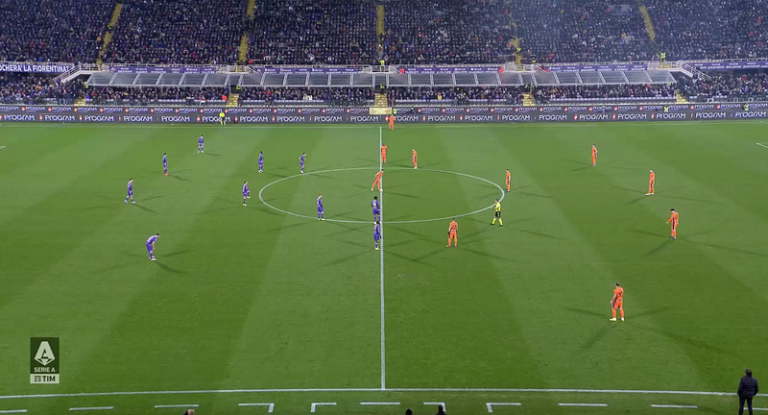
“At first he seems tough and he may even annoy you with his persistence and don’t-take-no-for-an-answer resilience, but in the end, he is a genius,” said nomadic Spanish striker Fernando Llorente of Marcelo Bielsa after his time playing under the Argentine boss at Athletic Bilbao.
Pep Guardiola, who looked to Bielsa for inspiration and a formative tactical base to his management style, recounted his interactions with the Argentine manager fondly and glowing with admiration.
“My admiration for Marcelo Bielsa is huge because he makes the players much, much better. Still I didn’t meet one guy, a former player from Marcelo Bielsa who speaks no good of him. They are grateful about his influence on their careers in football. He helped me a lot with his advice. Whenever I speak with him, I always feel like he wants to help me. He’s the best coach in the world,” – Pep Guardiola
Bielsa, the obsessive, systematic and unorthodox manager at the helm of newly promoted Leeds United is perhaps one of the most intriguing individuals in the modern game with the most unconventional, bizarre, yet immensely effective and addictive approach to managing football teams in this day and age.
The 65-year-old Argentine manager, of whom managers across the spectrum and his former players laud vociferously, showed very apparent glimpses of his transformational work at Leeds in his first game in charge of the Yorkshire outfit against defending English champions Liverpool, which was incidentally the first time he graced the Premier League with his presence.
If it wasn’t for substitute Rodrigo’s rash challenge in the box on Fabinho to concede a penalty late in the game against the Reds at Anfield, Leeds would have walked away with a well deserved point with the game tied at 3-3 until then. Bielsa nicknamed ‘El Loco‘ or ‘The Mad One‘ has been around in the world of management since the early ’90s and has, for a whole generation of managers in the modern game, from Guardiola to Pochettino and Simeone been a book keeper to the gates of tactical innovation and a teacher, guide and mentor.
With his intensive training regimes which sometimes last for several hours and in depth use and study of video clips of his opponents, Bielsa is a man who lives and breathes the game. As British journalist John Carlin accounted, the man is “the most learned football library on the planet“
The 65-year-old Leeds boss pioneered ‘Bielsa-ball‘, the most tactically inventive, highly efficient and mesmeric brand of football which has seen him garner a cult following from managers, players and fans alike, not only at Leeds but also wherever he has managed in his now longstanding 30-year career.
To fully understand ‘Bielsa-ball‘ you have to break away from the rigid notion that a team’s formation stays fixed throughout a game.
Bielsa’s tactics involve a combination of shapes and formations that dynamically change and interact with each other during the game. The rapid interchange of shape from a Bielsa managed team through different phases of play completely throws opposition defences off, forcing them to adjust and rethink.
Such is the clever dynamism of his team’s evolving shape. Bielsa’s teams are well known for using short and quick incisive passing but they are also not afraid to go long and exploit space if there is any and his teams are well drilled to play one or two touch football, quick, lethal and with high energy.
If there ever was a buzzword to define Bielsa’s underlying ethos and approach to modelling his teams, it would be ‘movement‘, simply put, simple to explain, yet so equivocal in its deployment. Movement both off the ball and on the ball, is so tightly knitted in the fabric of Bielsa’s set up.
“I am obsessive about attack. When I watch videos, it’s for attacking, not for defending. My football, by definition, is very simple: we run all the time. I know that it’s easier to defend than create. To run, for example, is a decision of the will. To create you need an indispensable amount of talent”. – Marcelo Bielsa
The Base Formation (4-1-4-1)

The 4-1-4-1 is Bielsa’s base formation which he starts with in games, like against Liverpool last night, with Meslier in goal, Robin Koch and Pascal Struijk in central defence flanked by the full-backs Stuart Dallas and Luke Ayling.
Kalvin Philips sits in front of the backline as the deep-lying playmaker who can ping a pass and orchestrate from a deeper midfield area, while Mateusz Klich and Pablo Hernandez play in central midfield in front of Phillips.
The wide players are Helder Costa and Jack Harrison who maintain the width and Patrick Bamford is deployed on his own up front as the lone striker.
The Magic Of Bielsa’s 3-3-1-3
To understand how the 4-1-4-1 adapts to a 3-3-1-3, we’ve broken down the process of how the shape changes with stages in play and the collective and individual movement of the Leeds players.
Stage 1: The full backs Ayling and Dallas bomb forward from defence creating width by going out forward and wide on the the underlap(which we’ll take a key look at later) but basically this is your typical full back run upfield into space. An underlap is exactly the opposite of an overlap, where instead of running around the winger to go wider, the wing back cuts inside while the wingers maintain the width.

Stage 2: The centre backs Koch and Struijk go wider to cover the space left by the full backs and they spread from a central position to cover the vacant space while the deep lying playmaker in the centre of midfield (Phillips) pushes back to the heart of a back three from where he can marshal the back line and pick out passes(which requires the deep lying midfielder to be adept at defending as well)

Stage 3: The two central midfielders i.e. Klich and Hernandez make opposite movements with one moving forward into the number 10 slot(Hernandez) and the other moving backward(Klich) covering the central space left by the backward movement of the CDM(Phillips) in the previous stage. This is a classic Bielsa movement where the number 10, called the ‘Enganche‘ in Argentina, occupies the playmaking position higher up the field behind the striker from where he can pick out passes and use his creative abilities.

Stage 4: Next, the wide players Harrison and Costa who usually operate wider, make their moves inward, cutting inside into the box from out wide and come closer to the lone striker Bamford. The movement ensures that the front three are within passing range of each other and this leads to more chances created and in turn, more goals for the lone striker and the wide players. Patrick Bamford scored 16 goals last season while Helder Costa got 5 goals and 4 assists and Jack Harrison notched up 6 goals and 8 assists for Leeds on their way to winning the Championship title last season.

Stage 5: The 3-3-1-3 is now complete as seen in the picture below.

This movement was very evident against Liverpool who ended up conceding 3 goals against Leeds with goals from Harrison, Bamford and Klich, all emerging from this exact system of movement.
Leeds’ First Goal
For the first goal, Phillips dropped deeper into the back three(Stage 2) and played a ball over the top of the Liverpool defence to Harrison who was on the left flank who then cut inside(Stage 4) and scored. As broken down below.
Leeds’ Wide Movement And The Underlap
Here, the full back Ayling(near the ball) moves inward from a wide position after bombing forward(Stage 1) and cuts inside to play a through ball to the lone striker Bamford who makes an excellent run and is through on goal but can’t finish. Notice how the wide players Costa and Harrison are keeping the width allowing the full backs to run inside.
Leeds’ Second Goal
For the second goal, Dallas makes a move inward from left back(Stage 1) and plays a delightful lobbed pass over the defence, towards Bamford and Van Dijk uncannily makes a mess of it and Bamford scores. Notice again how the inward movements of the full backs and the width from the wide players contribute to open up the space for Bamford to score by stretching the Liverpool defence.
Leeds’ Third Goal
For the third goal, Ayling(near Mane to the right of the ball) makes a dazzling run from full back on the underlap dragging five Liverpool players away to open space for Costa to thread a ball into Klich who makes a move from central midfield into the box. Klich then takes a touch and scores.
So in essence, if you break away from the macro and look at the micro, i.e. breaking away the overall base formation Leeds started with (the 4-1-4-1) and looking at the systems(3-3-1-3) within the overall formation, we can notice that Leeds have several systems evolving from their base formation which they dynamically adapt to as the game is being played and they are the individual building blocks of their entire gameplay, just like the individual compartments that make up a whole ship.
That was some game against Liverpool and Leeds were luckless to have not got a point at least because of the four goals they conceded, one goal was poor defending from a corner and two of the other goals they conceded from the penalty spot – the first a handball by Koch which was horribly unlucky and the second a reckless challenge by their striker Rodrigo(what was he doing!) – were extremely unfortunate.
It was an explosive performance from Leeds and their high octane football was a joy to watch, while Bielsa ranting and raving wildly in Spanish on the touchline like a madman(El Loco) also made for sheer quality entertainment.
“When he took the Argentina job, at the end of his first training session Bielsa handed the players a pencil and a little slip of paper. He wanted them to write down whether they wanted to line up with a back three or a four. He went through all the replies. “Back four, back four, back four… This clearly shows your preference for a line of four. But I’m telling you that from now on we’re going to be playing with a back three. See you tomorrow.” And he won them over, bringing them round to his way of thinking.”
He might not have won the game but the mastermind Bielsa surely won the hearts of fans across the world with that performance in his first game in charge of Leeds in the Premier League.
It’s was finally a chance for the English game to witness the wit and grit of the 65-year-old journeyman from Argentina, an odd-ball, an architect, a maestro and a talisman who has contrived to contribute much to the history of football management in the past 30 years. Vamos Marcelo!

















